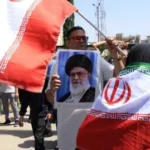Introduction
The U.S. military struck Iran’s most secretive enrichment plant—Fordow—dropping six GBU‑57 Massive Ordnance Penetrator (MOP) bombs from B‑2 bombers on June 22, 2025. The message: Fordow is gone. This analysis explores why Fordow was built deep underground, how the strike unfolded, and what it means.
🔍 What Is Fordow?

Built into a mountain 90 m underground near Qom (about 100 km from Tehran), the Fordow nuclear plant was designed to resist airstrikes. The facility began construction in 2007 and was disclosed to the UN’s International Atomic Energy Agency (IAEA) in 2009. It was designed to enrich uranium at high levels, making it a centerpiece of Iran’s nuclear capability. [Source: IAEA]
🚀 Why It Was Struck Now
Israel considered attacking but lacked appropriate munitions to reach Fordow’s hardened depth. The U.S. intervened using B‑2 bombers, capable of delivering GBU‑57 bombs. Reports say six bunker buster bombs were dropped directly on Fordow, while Tomahawk missiles targeted Natanz and Esfahan. [Source: Defense News]
🎯 Strategic Impact of the Strike
- Crippling Iran’s fortified enrichment site: Fordow’s removal weakens Iran’s clandestine enrichment capability.
- Military escalation: The U.S. directly targets Iran’s nuclear infrastructure for the first time in years. [Source: BBC]
- Legal risks: Attacking nuclear infrastructure draws legal and ethical condemnation globally. [Source: United Nations]
📌 Technical Details: The Bombs & Bombers

Each GBU‑57 can penetrate up to 60 m of earth or 18 m of reinforced concrete, perfect for deeply buried sites like Fordow. The B‑2 Spirit stealth bomber is uniquely suited to deliver such munitions undetected. [Source: Air & Space Forces Magazine]
🛡️ Iran’s Reaction & Aftermath
Iran confirmed the strike but stated that uranium materials had been removed beforehand. Iranian state media emphasized that radiation monitoring shows no contamination. [Source: Reuters]
The IAEA confirmed no significant radiation leakage has occurred. [Source: IAEA]
🔭 What Comes Next?
- IAEA monitoring continues: International inspectors are ensuring long-term site safety.
- Potential retaliation: Iran may respond regionally or escalate proxy conflicts.
- Diplomacy urgency: Global leaders are calling for renewed diplomatic talks to prevent broader conflict.
Conclusion

The U.S. strike on Fordow marked a significant shift in the conflict. By eliminating Iran’s most secure enrichment facility, Washington has demonstrated both military capacity and escalated tension. Long-term consequences will depend on diplomatic engagement or further confrontation.
Related Reading:
- US Strikes Iran Nuclear Sites: Analysis & Fallout
- Radiation Leak? US Strikes on Iran Nuclear Sites Explained
🔔 Subscribe for breaking developments as this story evolves.









